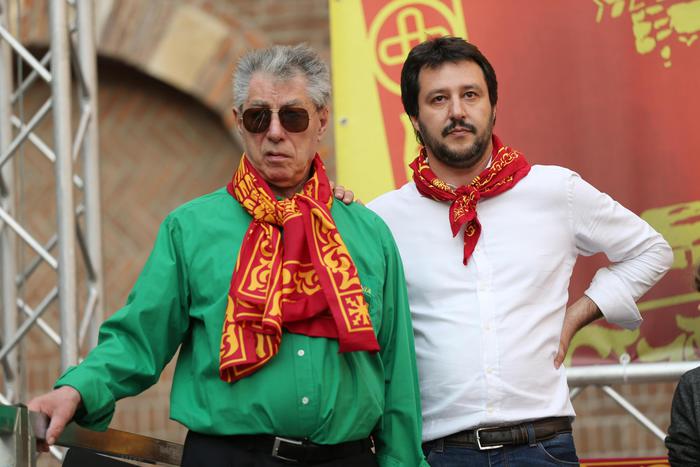He was born into a country family in Salto, Rojas district, province of Buenos Aires, and learned from his father and his brothers how to manage the contractor's business. "My dad went everywhere with the combine so that's our way of being, to go wherever there is work, wherever. We have put together a good team and we work well," says Mario Lori, a reference in the handling of machinery.
Observing the current context, he maintains that "this is a difficult year, and we are seeing how we are going to carry out the business. I always say that Argentines adapt quickly to the different situations that are presented to us, economic, climatic or whatever. We try to find a way around it and we adapt. This year is very atypical, so much so that I'm going to be 52 years old, and I've never experienced a similar circumstance climatically."
He points out that the area affected by the drought is very large and this makes it difficult to escape from it as the contractor who changes places looking for the job usually does. "We have always been rowing it with the economic and political issue, but, as I said, now the climate is added and it gets a little more difficult, but you have to try to surf the wave and pass it."
Another complicated issue this year is the prices of spare parts and tires, which disorganized our costs a lot. The spare parts for the spigot harvesters are taken care of by the representatives because they are American, and they also find it difficult to bring them. That is why I say that, in general, this year with this theme we are also quite complicated.
For the seedbeds
The seedbed gives him the herringbone harvesters on loan, and the rest of the equipment, box, diesel tank and people is Mario's responsibility. Work is paid per hectare harvested. While a herringbone combine has fewer movements and calibrations, it demands more personnel than a conventional combine.
With the seed harvest it covers the areas of Bahía Blanca, Pedro Luro and the west. It also works on the coast, in the areas of Miramar or Necochea, always responding to opportunities and a large part of them are generated in the core area, in Salto Pergamino, Chacabuco, Carabelas.
Fine-grained seeder, with autopilot on the tractor.
"As a novelty this year I started in the north, where I had not worked with the corn ear harvester and it was for January in Catamarca. The work was presented, I took it and we are fighting it quite well. I had been working in Tucumán and Santiago del Estero, but with the common harvesters for grain, that is, soybeans, wheat and corn."
In April, he was in Balcarce and Pringles, and emphasizes that the yields – harvesting in spike – in the south were much better than in the north, but the precise data are known by the seedbeds that are the ones that process the numbers.
They also do the despanojado, which is another operation demanded by the seedbeds and which consists of removing the male flower from 6 or 8 rows of corn every 10, with which only two rows are left with the panicle that is the male flower of corn. Then before harvesting they turn and chop those two rows and the spike of the female rows is raised.
Despanjadora that takes the male flower to the corn.
Mario maintains that he is very focused on what is seed since 70 or 80% of his work is with the seedbeds that are deeply rooted in the Salto area and are the ones that demand more services with machinery.
"There are not many of us who are in this area, and I am a reference for being the largest in teams and movement. Other contractors also have a lot of experience, but we evolved in such a way that, like few others, we do almost everything, planting, spraying and harvesting."
The team
"I have three grain harvesters, with 30-foot heads for soybeans, wheat and corn heads and each in one of these combines works well with two or three people."
Harvesting soybeans with a 30-foot head. There are 3 Mario teams like this.
The team is made up of 23 people and Mario is in charge of getting and organizing the work, while his brother Oscar, who is also in the organization, focuses more directly on the work with the irons.
With each combine he supports himself with his box, his diesel tank, two tractors and a van. "Loving each set, I included a van so that they have their own mobility which helps me a lot. For planting we have high-tech machines, with pneumatic dosing and autopilot on the tractors."
With the sprayer, Mario tells how he developed his experience since they had assembled the planting team with some boys with whom we worked in a field in La Pampa. "They invited me to build their own equipment with a sprayer, for which they had agreed to a loan. So they took care of the credit payments and I took care of making the machine work, which I did with a very good operator, who today continues in that function. "
In full harvest of spikes. Mario knows about this work and today is a reference.
"Two or three months after assembling the team, I had the opportunity to work a large field here in Salto, and since we bought it he has been working in that field. We do something else, but we have the strength in one field. Per year the sprayer makes between 20 and 25,000 ha, and it is a number that is quite profitable".
The work
"On a common day we start at 6:30 or 7:00 in the morning, or a little earlier depending on the case, and sometimes when we are with the ear harvest we can start at 4 or 5 in the morning because you can enter to harvest at that time until 10 or 11 at night. Also in the morning we start with the distribution of food in the equipment, and some need some spare parts, diesel and all the supplies they carry to make the irons work. "
As for times of being outside, at the time of making this note I come from having spent more than 20 consecutive days between Balcarce and Pringles, going from one location to another. After this time I returned home to be a little with my family and arrange some paperwork, "says Mario.
Corn seeder with pneumatic dosing.
With those trips, I do between 70,000 and 80,000 km per year with the van, although depending on the work area I touch the months are different. For example, between April and May my pace is 12,000 km / month, and then in the winter it drops a little. In total per year, I am about 3 months away from home adding all the trips and this is depending on how the campaign comes.
"In 2000 I merged, and I started again as an employee in 2001 with whom we are now partners along with my brother. Things were happening, I did not mix my body to anything, and I arrived where I am by dint of sacrifice and putting hours into work and leaving my family aside. Now we are a little better financially, I have a 24-year-old daughter studying in Pergamino psychopedagogy, and a 15-year-old son who is in high school, "says Mario.
When meditating a little more, he says "The irons serve to grow, with many setbacks and problems that must be faced every day, but it lets you grow, than in another capable area that is more difficult. Always by dint of sacrifice, making commitment and doing things well, otherwise they don't call you to work."
From the cab of the despanojadora
With its own seeders, it sows 7 to 8,000 ha per year of soybeans, corn, wheat. If you consider what you sow with the partner they walk for 12,000 to 15,000 ha / year. "It depends on the year, this year it shrank a little (20% less) due to the dryness. From fine and coarse harvest we make about 2000 ha per team and per year. The tractors that are used the most do between 1200 to 1500 hours per year and the boys will walk in the 400 hours / year. "
Costs, growth and people
"Getting the numbers right is the most difficult, because both the fuel and the maintenance of the iron and its price are very variable. The lack of credit also affects us a little, but I'm handling it and I can't complain. The credits are the machinery companies and the agencies, the bank never gave me anything and when it gave me something it brought me problems. In 2000 I was a tractor driver and today I have a fairly complete circus and I don't have to complain."
"Growing up costs us Argentines a lot, but we adapted quickly to changes, and I can say that when I melted and hit rock bottom I learned a lot. Before my idea was to do one or two things 100% well done. Then I learned that it is better to do everything and have every month to have silver entry. The reality is that if I do the finite numbers there are many things that I will surely stop doing, because they are not profitable."
Unloading the ears of corn into the truck.
In the consumption of diesel we are approximately between 12 and 15,000 liters per month, with months of more than 20,000 liters and months of 5,000 liters as in June, July and August that goes down a little and then goes back up.
"One of the limitations to assemble irons and put them to work in the field, is to get trained operators. Now I am bringing people from Santiago del Estero who know how to work and those who do not know we teach them. In this area the one who knows is already occupied, and the one who does not know does not get used to the field work that we do. It's people in their 20s and 30s who come from outside. The ones here are bigger," says Mari.
See also








/cloudfront-eu-central-1.images.arcpublishing.com/prisa/M5DPZ4TSIJEFPFB42IGIBO7YJ4.jpg)
